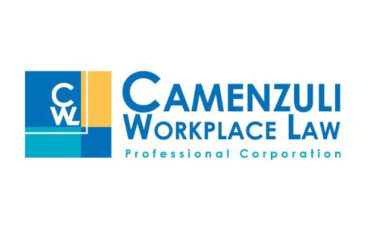What is Employment Law in Canada?
Employment law in Canada governs the relationship between employers and employees through a complex framework of federal and provincial regulations, common law principles, and collective agreements. With over 19 million Canadians in the workforce, understanding these laws is essential for both workers and businesses. This guide examines key aspects of Canadian employment law, including hiring practices, workplace standards, termination rules, and recent legal developments.
1. Legal Framework for Employment in Canada
Jurisdictional Division
-
Federal Regulation (10% of workers):
-
Banking, telecom, interprovincial transport
-
Governed by Canada Labour Code
-
-
Provincial/Territorial Regulation (90% of workers):
-
Most private sector employees
-
Employment Standards Acts in each province
-
Key Legislation
| Jurisdiction | Primary Legislation | Key Features |
|---|---|---|
| Federal | Canada Labour Code | 96 hours/year sick leave |
| Ontario | Employment Standards Act | 3 paid sick days (2024) |
| BC | Employment Standards Act | 5 paid sick days |
| Quebec | Act Respecting Labour Standards | 2 paid sick days |
2. Hiring Practices and Employment Contracts
Legal Hiring Requirements
-
No discrimination (human rights protections)
-
Valid employment contracts
-
Compliance with minimum wage laws
Common Contract Types
-
Permanent Employment
-
Full benefits
-
Termination notice/pay requirements
-
-
Fixed-Term Contracts
-
Ends automatically
-
Damages if terminated early
-
-
Independent Contractors
-
No employment protections
-
Must pass legal tests
-
Recent Trend: 32% increase in misclassification disputes since 2020
3. Workplace Standards Across Canada
Minimum Wage Rates (2024)
| Province | Rate/Hour | Scheduled Increases |
|---|---|---|
| Ontario | $16.55 | October 2024 adjustment |
| BC | $16.75 | June 2024 increase |
| Alberta | $15.00 | No scheduled increase |
| Quebec | $15.25 | May 2024 adjustment |
Standard Entitlements
-
Vacation Time: 2-4 weeks depending on tenure
-
Statutory Holidays: 5-10 paid days
-
Overtime Pay: 1.5x after 40-44 hours/week
-
Parental Leave: Up to 18 months (EI eligible)
4. Termination and Severance Rules
Notice Period Requirements
| Years of Service | Minimum Notice (Ontario Example) |
|---|---|
| <1 year | 1 week |
| 1-3 years | 2 weeks |
| 3-8 years | 1 week per year |
| 8+ years | 8 weeks minimum |
Wrongful Dismissal Considerations
-
Common law notice often exceeds ESA minimums
-
Factors affecting notice periods:
-
Age
-
Position
-
Job market conditions
-
Inducement from previous job
-
Average Severance: 3-24 months pay for non-unionized employees
5. Workplace Health and Safety
Legal Requirements
-
Joint Health & Safety Committees (20+ employees)
-
Workplace Hazard Assessments
-
Right to Refuse Unsafe Work
Provincial Variations
-
BC: Workers Compensation Act
-
Alberta: Occupational Health and Safety Act
-
Quebec: Act Respecting Occupational Health and Safety
6. Human Rights Protections
Prohibited Grounds of Discrimination
-
Race, gender, religion
-
Disability, age, sexual orientation
-
Family status, marital status
Duty to Accommodate
-
To point of undue hardship
-
Includes:
-
Physical accessibility
-
Modified work schedules
-
Assistive technologies
-
7. Recent Legal Developments (2024)
Legislative Changes
-
Federal:
-
Right to disconnect policy consultations
-
Pay equity implementation
-
-
Ontario:
-
Digital platform worker protections
-
Non-compete clause ban
-
-
BC:
-
Paid sick day expansion
-
Gig worker benefits
-
Notable Cases
-
Waksdale v. Swegon North America (ONCA): Termination clause enforceability
-
Colistro v. Tbaytel (ONSC): Mental health accommodation
-
Wilson v. Atomic Energy (SCC): Constructive dismissal standards
8. Unionized Workplaces
Key Differences
-
Collective agreements replace ESA standards
-
Grievance arbitration instead of courts
-
Union dues mandatory in union shops
Recent Trends
-
30% increase in certification applications
-
Remote worker organizing challenges
-
“Micro-unit” bargaining units
9. When to Consult an Employment Lawyer
For Employees
✅ Wrongful dismissal concerns
✅ Workplace discrimination
✅ Contract reviews
✅ Severance negotiations
For Employers
✅ Policy development
✅ Union avoidance strategies
✅ Workplace investigations
✅ Compliance audits
Legal Aid Availability
-
Limited employment law coverage
-
Community legal clinics (income-based)
-
Contingency fee arrangements
10. Future of Employment Law in Canada
Emerging Issues
-
AI in hiring/performance management
-
Four-day work week trials
-
Remote work tax implications
-
Mental health accommodation cases
Regulatory Outlook
-
Stronger gig worker protections
-
Expanded pay transparency
-
Increased focus on DEI compliance
Conclusion: Navigating Canada’s Employment Laws
Canadian employment law continues evolving to address changing workplace realities. Both employers and employees benefit from understanding their rights and obligations in this complex legal landscape.






















